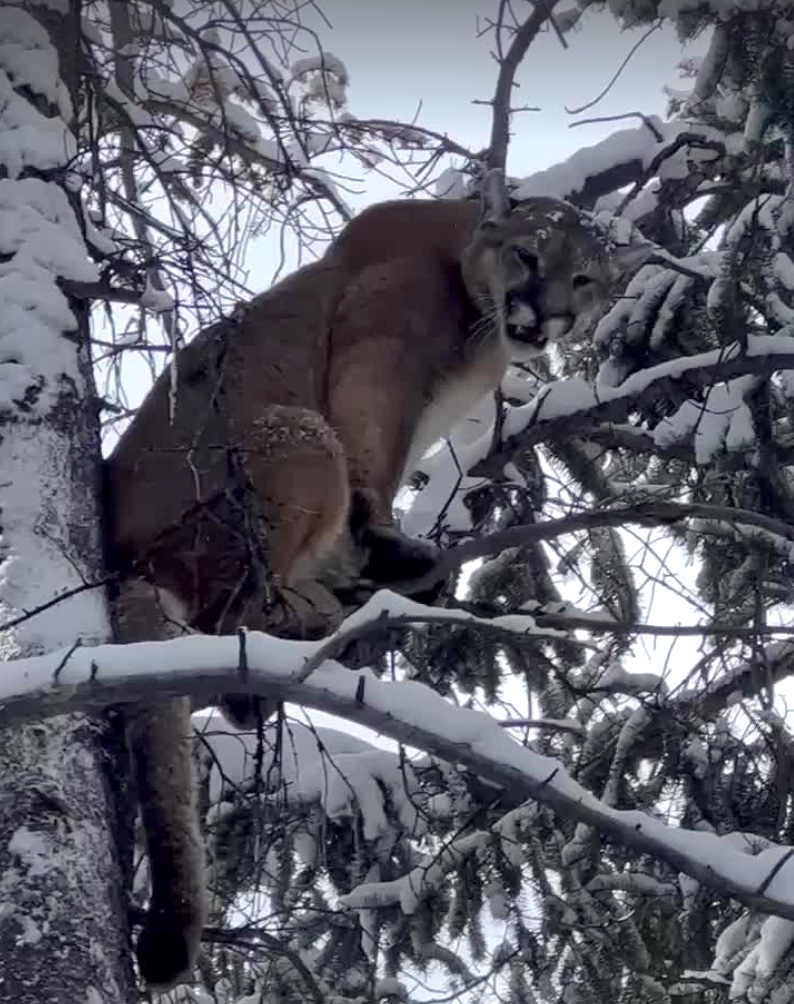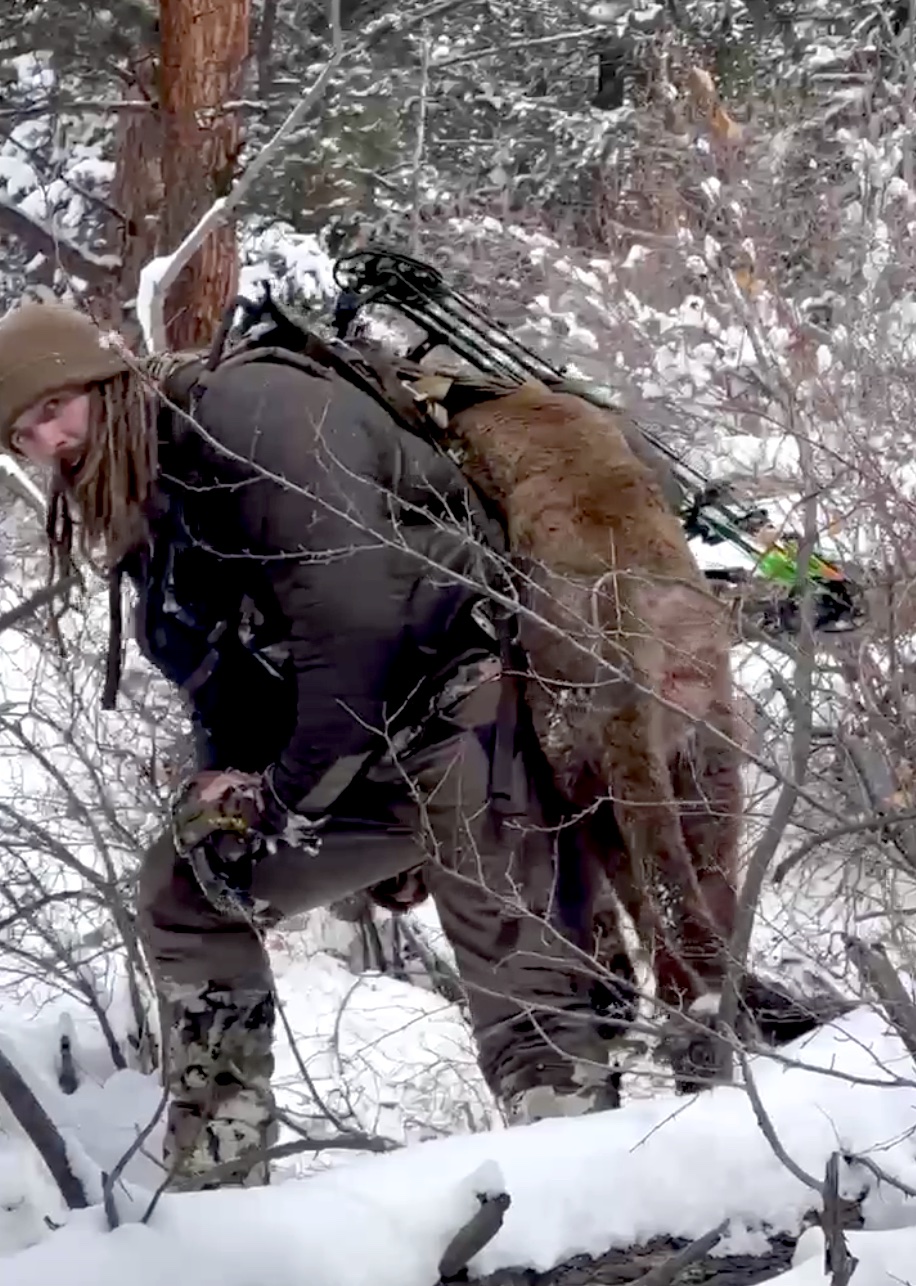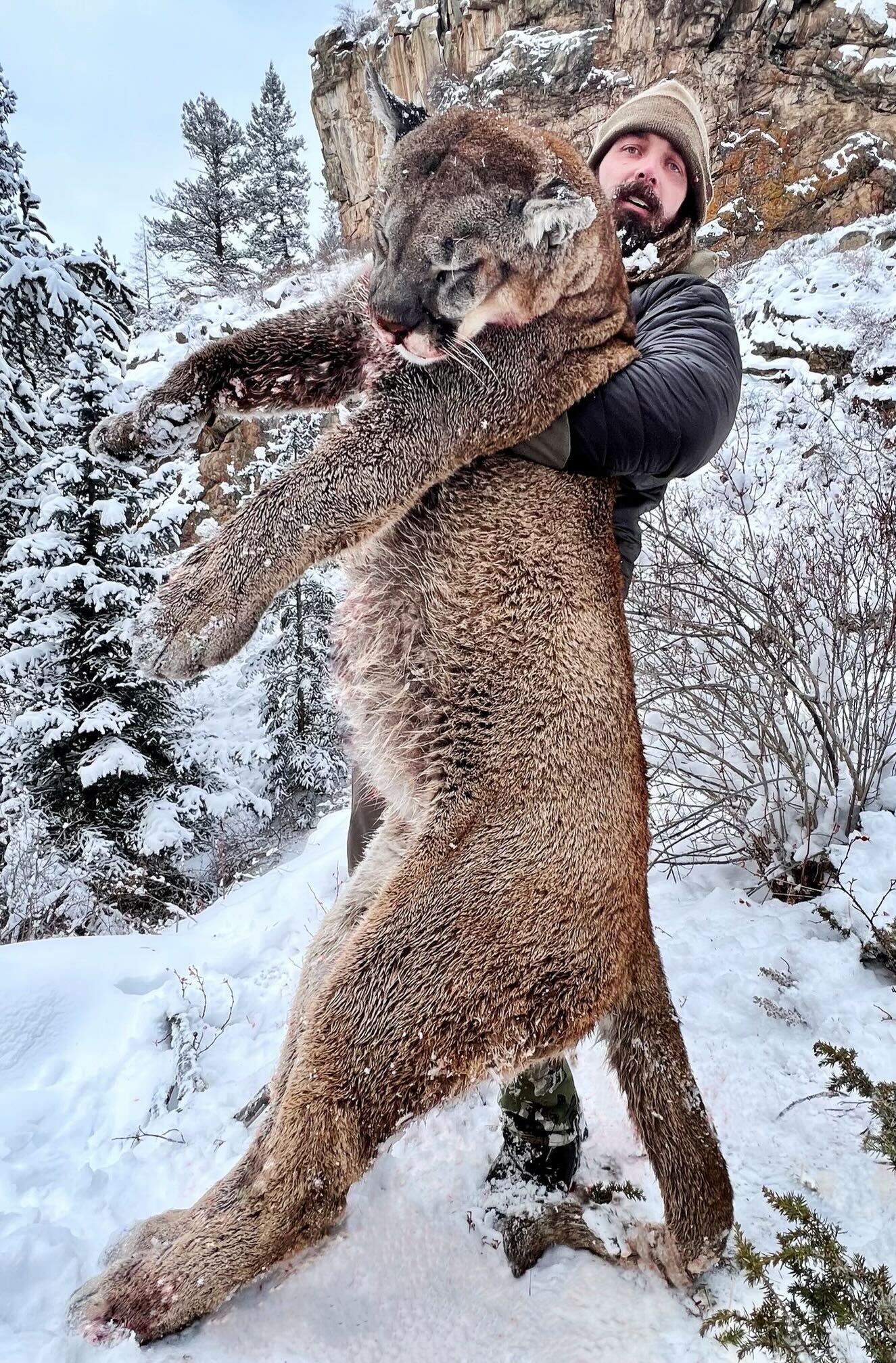
By now, you’ve probably seen the photo of former Broncos defensive lineman Derek Wolfe and the massive cougar he recently shot in his home state of Colorado. The cat, who weighed in at 173 pounds, will likely go into the record books of Boone and Crocket, but that’s not what draws Wolfe’s attention so much.
While Wolfe’s success in capturing what many believed was a problem cat is celebrated by the hunting community, he has also received criticism from those who do not understand what lion hunting is all about and the vital role it plays in the game. wildlife management.
“People just don’t get it,” Wolfe told MeatEater. “Conservation is a science-based approach to wildlife management, and regulated hunting like this is an important conservation tool.”
Cougar conservation in Colorado is an impressive success story. After nearly a century of bounty hunting, in the 1960s, the Colorado lion population was estimated to be as low as 124 cats. After lion bounties were abolished and hunting regulated in 1965, the Colorado lion population began to rebound. Today, the cat population has skyrocketed in Colorado with estimates ranging from 3,000 to 7,000 animals.
Like any other game species, these big cats must be managed in accordance with biologists’ goals. Regulated hunts like Wolfe’s are an important tool in achieving these management goals.

Biologists take many factors into account when determining how many lions hunters can take. A big part of the equation is making sure lions don’t exceed the carrying capacity of their main range. When the lion population exceeds that carrying capacity, cats find themselves pushed to the limits of their range, which often overlap with suburban and even urban communities. These are the places where predators are most likely to have unwanted interactions with livestock, pets, and people.
“People don’t understand how many cats are here and why we need to hunt some of them. They think it’s illegal, they keep calling CPW to report me,” Wolfe said. How the public doesn’t seem to understand the magnitude of the Colorado lion population is beyond him.
“A couple of years ago, less than ten minutes from where we were chasing this cat, a lion attacked an 8-year-old boy who was playing in his backyard,” Wolfe said. “I’m not saying there are a million mountain lions trying to kill you, I’m just saying there are a lot of them and they get into communities and cause trouble.”
People who live in the area are all too familiar with the problems these big cats can cause.
“We were knocking on doors, trying to get permission to access these people’s land, but no one responded, except for a neighbor who said she had the cat under her porch, and her cats and dogs weren’t leaving the house. Wolfe said. “In the snow, you could see where the lion roamed the neighborhood. We really wanted to get permission from a guy who owned the land where we saw roads being made, but we couldn’t locate him.”
After a few hours of driving and trying to gain access, Wolfe and his hunting partner, Alex Nester, were about to give up. But as they were leaving, they passed the property where the road cut once more, and this time, the owner of the house was in the driveway of his house.
“He waved us over and asked if we were lion hunters,” Wolfe said. “Then he asked us if we saw the footprints near his house. We told him yes and that we had knocked on his door twice”.
It turned out that the owner of the house had heard the couple, but, since he did not expect visitors, he thought that the noise at his door was the lion. He told Wolfe and Nester that he frequently saw the lion on his property, including on and under his porch. Even more alarming, he had seen the lion peering at him through his living room window on more than one occasion. Excitedly, he granted Wolfe and Nester permission to access his land.
Although the cat was indeed a problem for the local community, Wolfe wants to make it clear that the media that touts him as “the hero who saved the town from the lion” is exaggerating things.
“Man, some media is making it look like there was a lion terrorizing the village, so they put on the bat signal and here came Derek Wolfe to save the day,” Wolfe said. “It was not so. I love to hunt and I had the opportunity to go for a lion run with my friend.”

“Run a lion” is shorthand for lion hunters to release the hounds on a new mountain lion track and follow them until they chase the cat up a tree, where it will likely stay until shot or the hounds are cancelled. . That’s a sticking point for some.
Critics of hound hunting see it as being out of the spirit of fair hunting, or as a form of hunting that lacks some essential challenge. In Wolfe’s experience (and the shared experiences of lion hunters across the country), hound hunting is anything but easy. The physical demands are extreme. Even as a former professional athlete (Wolfe retired from soccer in 2022), he counts this lion hunt among the hardest things he’s ever done.
Beginning the hunt at an elevation of 7,700 feet, Wolfe and Nester began following the sound of howling dogs. “It was brutal, we were just following the mountain lion from one cliff to another. It was all snow-covered edge rock, you couldn’t go downhill, and the only two directions to go were up or down. I literally had to crawl on my hands and knees,” Wolfe said.
After jumping over the lion twice, Wolfe and Nester finally caught up with the cat as it climbed a third and final time to 9,600 feet: five hours, two drains, and many thousands of vertical feet gained and lost later.
“I had full body cramps when I got to the cat,” Wolfe said.
He doesn’t remember much about the shot, other than being exhausted and having to call on his professional sports experience to muster his remaining energy, recover, and shoot the cat. It was a good shot, but at the time, Wolfe didn’t feel a rush of adrenaline or triumph. He was mostly spent.

“After the shot, Alex ran down the hill with the dogs and found him. The lion jumped from the tree and did not travel more than thirty meters. She was so tired that she just had to sit there and recover a bit. It took me about 30 minutes to get to the cat,” Wolfe said.
When he finally got close to it, the tom was 8½ feet long with an estimated live weight of over 200 pounds. The skull measured around 15 inches before the drying period.
Despite its impressive size, Wolfe says hunting the lion was the end of a journey, not the pinnacle of the experience. In the world of lion hunting, that sentiment is pretty universal. For most dedicated lion hunters, excitement has little to do with capturing an animal. The real appeal of lion hunting lies almost entirely in the chase and where the chase takes you. For many, the harvest is secondary, if it happens at all. It is not uncommon for hounds that have hunted hundreds of cats to only reap two or three.
Now that the dust has begun to settle, Wolfe has had a chance to reflect. While he’s used to being in the public eye, this is the first time he’s had anything to do with hunting. He plans to use the opportunity as an opportunity to bring his love of the outdoors to the masses and advocate for hunters’ rights. Access to the outdoors is very important to Wolfe: aside from the soccer field, nature was a singular refuge during a difficult childhood.
“I grew up very poor. I don’t know my dad, my mom was an addict and she ended up in jail when I was 12, and my stepdad was abusive. The only places where I found peace were on the soccer field and outside,” Wolfe said.
Wolfe is making it his post-football mission to ensure outdoor opportunities are available to the kids who grew up like him. He thinks that he starts with the union of all hunters as members of a community.
“In the future, my goal is to unite the hunters. We are all hunters and we need to support each other. There are groups that are trying to take game from us, and if we want to preserve game for future generations, we need to come together and get rid of the infighting.”
Asked what his plans were for the lion, Wolfe said the cape is at the taxidermist and the beetles are cleaning the skull. “But what I’m really craving,” Wolfe said, “is breakfast sausage.”

Source: news.google.com